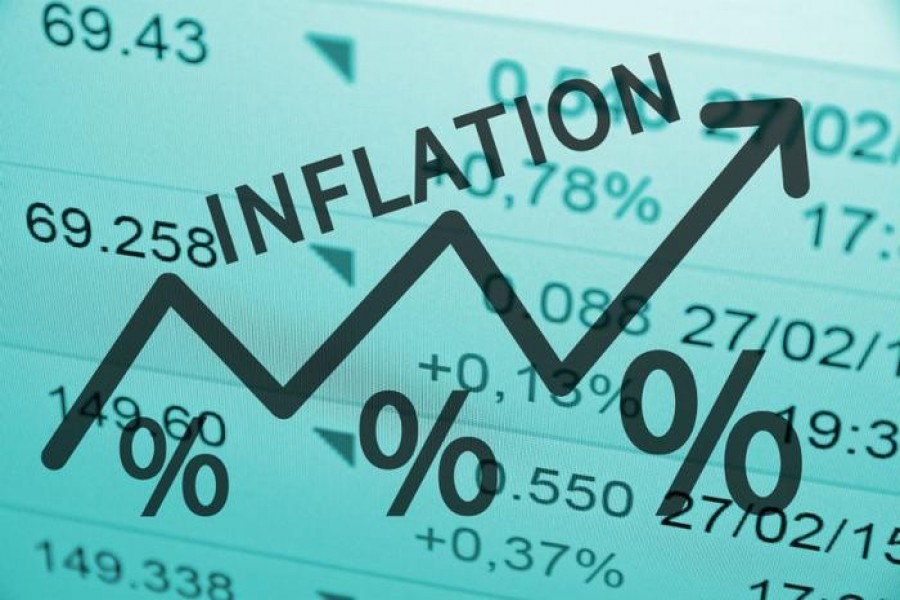No respite will be there from high inflation in the near future. It is the core message of the latest annual report of Bangladesh Bank. The central bank released the annual report for fiscal year 2021-22 last month, around seven months after the end of the past fiscal year. The release of the report was preceded by the formal announcement of half-yearly monetary policy statement (MPS).
The MPS for the last half of the current fiscal year (FY23) largely concentrated on fighting against a persistent increase in inflation. The annual report further highlighted the risk of persistent inflation in the near future.
Usually, the annual report presents an analytical review of the country's economic activities of the past fiscal year, or the year the report is prepared for, with extensive focus on the banking sector. It also contains the overview of activities and annual financial statements of Bangladesh Bank and provides a series of updated statistics on economy. The latest 350-page report continues on the usual structure. So it is not difficult for anyone familiar with the annual flagship publication of the central bank to find the desired things in the report.
It is the near-and medium-term outlook for Bangladesh economy that economists, businessmen, analysts and journalists want to know first once they have the report in hand. The outlook sub-section under the 'macroeconomic performance and prospect' section is brief. There are two more relevant sub-sections available in the next two sections. One is 'sectoral growth outlook', another is 'near-term inflation outlook.' These sub-sections of the report provide projections on the economic growth, potential drivers of growth, and possible inflation situation by the end of the ongoing fiscal year.
As Bangladesh Bank is used to making its analyses and projections quite cautiously, it may be sometimes difficult to comprehend the actual meanings and messages of the statements. An 'intentional ambiguity' in the texts is there due to conservative approach to public communication of the central bank. This may also be misleading to some extent, which is not desirable.
Nevertheless, what is derived from the near-and medium-term outlook is that the country's economy would likely stay in the post-Covid recovery path. At the same time, external factors like higher global commodity and energy prices are set to cast shadow on growth momentum. The protracted Russia-Ukraine war is considered main source of trouble and uncertainty in the global economy, and Bangladesh also cannot escape its fallout. So, growth rate is likely to come down.
Several internal factors may also undermine the growth prospect in the current fiscal year, argues the central bank annual report. These include recent flood in the north and northeastern regions of the country which "may be harmful to crops, livestock, fisheries, and infrastructures." Moreover, "low power supply and fuel price hike in the recent months may also have some negative consequences on the cost of production, import costs and GDP growth."
The central bank, however, underscored some internal factors as growth drivers in the current fiscal year as well as future. It said that the Padma Bridge opened a new economic gateway between southwestern districts and the rest of the country. "The economic activities in the southwestern part of the country have already been significantly stimulated and are expected to further gear up in the coming months, especially after the launch of ongoing rail-connectivity project through the Padma Bridge," the report added. It also observed that the economic growth "will come back to its normal path by successful implementation of stimulus packages taken by the government and Bangladesh Bank." Various policy measures, including expansion of the mobile financial services and agent banking and the opening of sub-branches in the remote areas, and creation of sufficient loanable funds will contribute to growth.
Not that the economy is going to face a sharp decline in growth rate in the current fiscal year. What is obvious is modest fall in economic growth. Initially the government set a target to achieve 7.50-percent growth in the FY23. Now, it has been revised down to 6.50 per cent. The final estimate of GDP for FY22, released by Bangladesh Bureau of Statistics (BBS) in the last week, showed that the economy posted 7.10-percent growth in the past fiscal year which was 6.96 per cent in FY21. Now, it will again come down below 7.0 per cent in the current fiscal year.
With lower rate of GDP growth, the economy is set to be hit hard by higher rate of inflation now. The government's primary target was to keep 5.60-percent general inflation ceiling in the current fiscal year. But since the beginning of the year, inflation has been on upward curve, causing sufferings to lower-and fixed-income people. In January, the average rate of inflation reached 7.92 per cent. Monthly rate, however, slightly declined to 8.57 per cent in the last month which was 8.71 per cent in December and 8.85 per cent in November.
The annual report of Bangladesh Bank acknowledged that containing inflation at tolerable levels along with maintaining stability of exchange rate will be a critical challenge. It, however, linked the inflation outlook in the coming months with four factors. These are: spillover of price from supply-demand mismatch, Russia-Ukraine war, volatility of exchange rate and commodity price hike on the global market. It also stressed both monetary and fiscal measures to contain the inflationary pressure in the coming days.
These cautionary notes on price situation also indicate that the central bank has to extend its fight against the inflation with all its tools and limitations. It thus calls for government's all-out effort to moderate the surge in prices. Slight drop in the monthly inflation rate should not be the matter of complacency.


